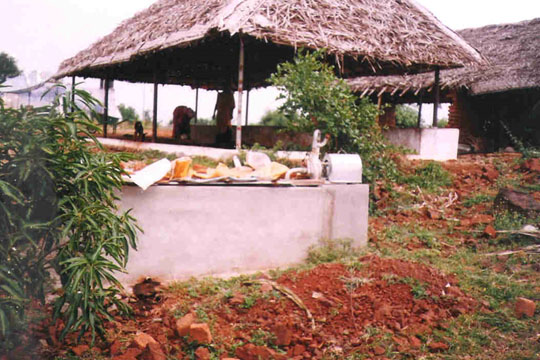Compost is an inexpensive and effective soil conditioner that recycles organic waste materials. Nutrients in plant material are returned to the soil through the breakdown of organic material by the action of microscopic fungi and aerobic bacteria. Organic wastes are decomposed, and the result is a material useful as a natural fertilizer.
When properly managed, a compost pile will not produce odors or attract pests. The finished product can be ready for use as a garden mulch in as little as six weeks with proper management. Compost has proven valuable for use in land reclamation efforts where erosion or earth moving activities have disturbed the topsoil.
Shortlisting Planting Material & Procurement to create a Bio Diversity – Dense Plantation on the Farm.
A good time to start a compost pile is whenever organic materials are available. The fall of the year is quite suitable, since composting can serve as an alternative to the burning or landfilling of leaves. Tree-trimmings, grass clippings, garden refuse, kitchen and lunchroom food wastes, sawdust, manure, wood ashes, hay and straw are among the organic wastes suitable for composting. Meat and dairy products should be avoided.
Develop a plan of operation that outlines the procedures for conducting the composting project.
An easy to manage compost pile can be enclosed on three sides by utilizing wooden pallets, used concrete block, fencing or hay bales. The fourth side should be accessible to permit turning the pile. A 4'x4'x4' enclosure can yield a ton of compost.
A compost pile can be constructed without an enclosure. A shallow pit may be excavated and the organic material simply piled. The excavated soil will be added to the pile.

Maintain a record of the composting process. Enter the date of compost pile construction, the organic materials added to the pile, the days the compost pile is turned, the date the compost is ready, how the compost is used and other observations.
A soil thermometer can be used to monitor the temperature of the pile. Create a compost pile temperature chart plotting thermometer readings over the term of the project.
The finished compost may be sifted through a ½" mesh screen with rejected particles returned to the compost pile, or the compost may be added directly to garden soil. Applied as a mulch or top dressing around plants shrubs and trees, the compost will provide soil nutrients, retain moisture, and inhibit weed growth. Look for uses for compost around the school grounds. Consider marketing sifted compost as a fund-raising activity.
© 2016 GREEN GARDENS. All rights reserved | Design by Kraftworks